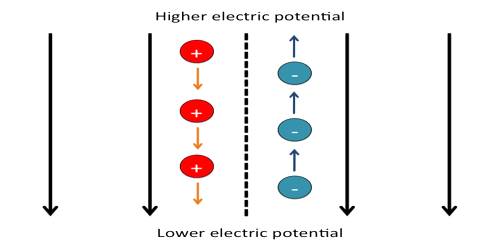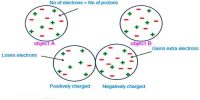Electric potential
In electricity, the potential is a very important and significant term. If two charged bodies are connected by a conducting wire, charges may or may not flow between the two bodies. The flow of charge does not depend on the amount of charge in the bodies but depends on a particular condition existing between the bodies. This condition is called electric potential. There will be a flow of charge only when there is a potential difference between them, otherwise not. In an electrical circuit, there will be a flow of current between two points because of potential difference existing between them.
There is a similarity between electric potential and flow of water contained in two pots and flow of heat between two bodies. If a large vessel containing water is connected to a small vessel containing water, there will be a flow of water only when there is a difference of height of water levels between the two vessels and the flow of water will continue as long as they attain the same water level. Similarly, if a thermal contact is made between two bodies, heat will flow between them until the temperature of the two bodies becomes same or they come into thermal equilibrium. In both the cases, the flow of water or flow of heat does not depend on the respective amount of water or heat. In case of electricity, the same thing happens. The flow of the barge between two charged bodies will take place only when there is a potential difference between them. Charge flows from the body having higher potential to a lower potential. So, we can define the electric potential in the following way.
Definition: The electrical state for which flow of charge between two charged bodies takes place is called electric potential.
Electric potential is the ‘push’ of electricity through a circuit. It’s easy to confuse electric potential with electric current, so it helps to think of electric current as the water in your shower and electric potential as the water pressure. Like water pressure, varying voltage can increase or decrease the flow of electricity.














